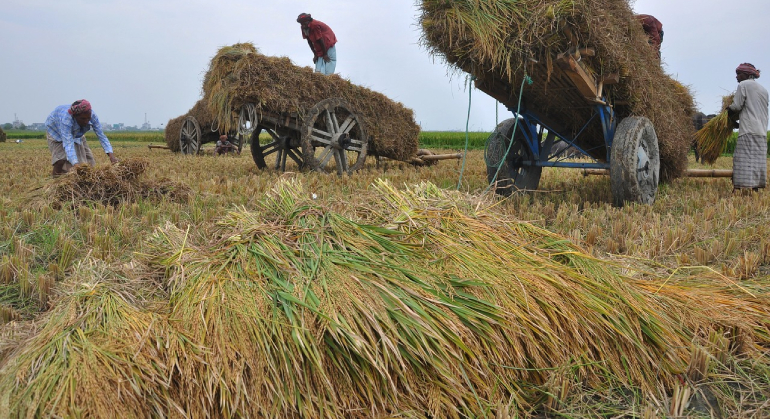
Food price are likely to surge in the coming months with India witnessing heavy showers ahead of the harvest season for summer-sown crops such as rice, soybean, cotton and pulses. Rains have damaged the crops right before the harvest, prompting expectations of higher food prices. This may add to India’s pre-existing inflation worries.
The increased food prices may eventually add pressure on the Reserve Bank of India (RBI) to go for another rate hike in order to bring inflation back to its comfort level.
In the latest policy review, India’s central bank had left its inflation forecast unchanged at 6.7% for Asia's third largest economy for this fiscal year that ends Mar. 31, as it flagged persisting pains from food price pressures.
Soaring food prices may also lead to additional restrictions being imposed by the government on exports of food commodities such as rice, wheat, and sugar.
"There has been so much rainfall from the last one week that now we can see sprouts from the paddy seeds," Reuters quoted Narendra Shukla, a 36-year-old farmer from Barabanki in Uttar Pradesh, as saying.
The entire paddy crop, which could have been harvested in a fortnight, has flattened and Shukla is now waiting for the weather to clear so he can finish the task and plant potatoes.
This year’s rainfall cycle was delayed in June and while crops are now ready for harvesting, an area of low pressure is bringing heavy rainfall in north-western and eastern parts of the country and delaying the end of the south-west monsoon.
In addition, the northern and eastern areas are expected to see heavy rainfall in the first half of this week, while southern India could get above average precipitation in the second half, said a senior official with the state-run Indian Meteorological Department.
The northern state of Uttar Pradesh, the country's second biggest producer of rice, has received 500% more rainfall than normal so far in October.
Neighbouring Madhya Pradesh, West Bengal, Haryana and Rajasthan have also seen heavy rainfall, which has damaged summer-sown crops, dealers said.
That could lead to a reduction in yields and a deterioration in harvest quality, since crops were ready for gathering and in some places harvested crops were already drying, said Harish Galipelli, director at ILA Commodities India Pvt Ltd, which trades farm goods.
Indian farmers usually plant summer-sown crops in June-July with the arrival of monsoon rains, with harvesting starting from mid-September.
Crop damage is likely to push already rising food prices up further, reported Reuters citing a Mumbai-based dealer with a global trading firm.
"The government and RBI are under pressure to bring down inflation. The downward revision in crop production numbers means more and prolonged export curbs," the dealer said.
The central bank has already been hawkish with its rate hikes this year and with food prices soaring, this is likely to continue. The RBI has already raised its benchmark repo rate by 190 basis points.
Sources : www.economictimes.indiatimes.com





Leave a Comment